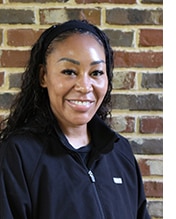
Hello. My name is Melondy Mathis, Clinical Supervisor at Hamilton Dermatology. Madison has asked that I take over the April Edition of the PS From The PA.
Two of our most frequently asked questions are: How Do I Layer My Skin Care Products, and at What Age Should I Start a Beneficial Skin Care Regimen?
To layer or not to layer? That is the question
Layering can be very beneficial to address specific skin conditions or improve our overall skin texture; we can start this multi-step process from very early ages, “tweens,” to more mature skin. Layering can be simple or highly complicated and time-consuming. First, however, we must understand why we layer skincare. Layering skin care products has been around for over 6000 years and dates to ancient Egypt; however, that multi-step process aged out and returned in the 1960s and has continued to trend to the present day. Layering maximizes the benefits of our active ingredients and ensures absorption, effectiveness, and skin health. It can also help reduce the reactions that can happen when using some actives, such as Retinols, Tazarotene, some Vitamin Cs, and other active medications.
What age do I start?
Skincare routines typically start around age 12, but based on the skin condition, your Dermatologist may start a proper regimen earlier. Below are layering techniques and regimens. Always consult Dr. Hamilton, Madison Hamilton PA-C, or Allene Bagwell to confirm you are using your prescription medication correctly.
- Tweens (ages 8-12): Gentle Wash for regular skin. For more Acne-Prone Skin, Dr. Hamilton and Madison recommend CeraVe Acne Foaming Wash, Panoxyl, or Vanicream Facial Cleansers. Apply any actives (including all prescription medications) and let sit for 1 min for absorption, followed by moisturizer and sunscreen. We recommend sunscreens with at least 7% zinc or higher. Tween regimens should be gentle and focused on getting our tweens to form a healthy skincare routine.
- Adolescents (13-17): Because puberty is starting, your provider may add an exfoliating wash or gentle exfoliators to the routine. Start with either an exfoliating wash or a gentle wash. Apply actives (typically a prescription medication or an exfoliating toner; please contact one of our providers to see which is best for you). Apply moisturizer followed by sunscreen.
- Young Adults (18-29): At this point, you should be interested in maintaining healthy, glowing skin. Start with a cleanser designed for your skin type. Apply actives or any prescriptions such as retinoids, and let the skin dry for 30 seconds to 1 minute, followed by Vitamin C (contact our providers for which is best for your skin needs; we have great in office products and OTC options), any other serums (essences, hydrating mists), followed by eye creams, if necessary, followed by hyaluronic acid on damp skin – followed immediately by moisturizer and sunscreen.
- Adults (30-39): By this age, you may start noticing signs of aging starting to occur. As always, you will begin with a cleansing regimen. I want to mention that double cleansing is an excellent addition to any skin care regimen. Following your cleansers, you will apply your actives in the following order: prescriptions and acid-based serums, Vitamin C, Hyaluronic Acid on damp skin, moisturizers, and finish up with sunscreen as part of your routine. You should also add a chemical exfoliant to your routine once or twice a week. Laser treatments, either a series of monthly or yearly treatments, should be considered at this point, along with red light therapy. You can always contact our providers to determine which products and treatments, if any, are best for your skin care needs. Chemical Peels, Microneedling, and Facials are also great options for maintaining and correcting signs of photo-damaged skin. Retinols should be a staple in your p.m. regimen.
- Maturing Skin (40-59): This is the time to Correct and Repair. You will address more visible signs of photodamage from “age spots,” “freckling,” compromised skin barrier, wrinkles, and volume loss. Start with exfoliating cleansers and then tone skin with acid-based toners, apply Vitamin C, copper peptides, growth factors, hyaluronic acids, barrier repairing moisturizers, and sunscreens in that order. Laser treatments, chemical peels, and radio frequency treatments should become part of your routine, along with red light therapy and weekly more intense in-home chemical treatments. Retinoids should be a staple in your p.m. regimen. As always, you can contact our office for help in determining which is best for your skin care needs.
- Mature Skin (60 and Up): This is the time to maintain and help the skin build and keep collagen. If you want to keep collagen as plentiful and robust as possible, using sound science and technology-based skin care will be essential to helping skin remain smooth, tight, and firm. A regimen should include double cleansing, exosomes, antioxidants, peptides, and eye creams designed for more specific needs (targeting texture and loose skin). Use very hydrating moisturizers that nourish the skin and protect it. In-office procedures should also become part of your routine.
Taking care of our skin should be a top priority and forming proper skin care habits can help maintain its health and functionality. We have an effective team of providers at Hamilton Dermatology who can address all your skin care needs and help you build a regimen catered to your specific skin concerns and goals. Please contact our office to schedule an appointment.
Melondy Mathis, Clinical Supervisor
Don’t miss the latest news and updates – sign up for our newsletter!
